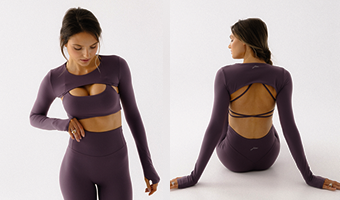Warrior Pose III — Yoga Virabhadrasana III
Warrior Pose III is the most difficult version of the warrior pose. Its name comes from a legendary hero from Indian lore. Virabadhrasana III is a balancing and challenging asana. To perform it, you need strong abdominal and back muscles that will help you maintain balance. The pose can be modified to suit the level of difficulty. Learn how to prepare for and perform Virabadhrasana III.

Virabhadrasana III – how to do it?
Virabhadrasana III requires proper preparation. Pro yoga mats are best for balancing poses, providing excellent stability and uncompromising grip without slipping during practice. This is a good choice for both beginners and advanced yogis who need additional foot support. It's also great for inverted poses. Yoga on a mat guarantees cushioning for joints and comfort during practice. It's also worth ensuring comfortable clothing that won't restrict movement. A fitted top or bodysuit that won't slip down is the best choice. Yoga leggings are also ideal, as they allow for unrestricted movement, giving you a feeling of complete freedom.
To perform Virabhadrasana III, stand in Tadasana. Then, step your left leg back. Your stance should be wide enough for stability. Point your right toes forward, and place the other foot parallel to the edge of the mat. Take a deep breath and, as you exhale, bend your front leg at the knee. Then, raise your arms above your head and clasp your hands together. Hold the Warrior I pose for six inhalations and exhalations. Then, twist your torso to the left and lower your arms to your sides, shoulder height, so they are parallel to the floor. Turn your head slightly to the right. At this point, you can also lower your hips and tilt your pelvis down. Hold Virabhadrasana II for 30 seconds.
Then return to Warrior I, bending your torso and resting your chest on your right thigh. Extend your arms forward. On an exhale, shift your weight onto your front leg. Raise your torso and left leg. Try to straighten your legs and lengthen your spine so your body is parallel to the mat. If you have trouble maintaining balance, you can do this exercise against a wall and place the foot of your raised leg against it, or use yoga blocks and place your hands on them. Hold the pose for three breaths, then return to Warrior I, then to Tadasana. Repeat with the other leg.
Warrior III Yoga Pose – Recommendations and Effects
Warrior 3 Pose strengthens the abdominal muscles, back, arms, and legs. This pose is excellent for building balance and improving coordination. However, it is not recommended for people with high blood pressure, neck injuries, or insomnia. If you have hyperextension in your knees, ankle problems, or severe lumbar lordosis, ask your instructor about modifying this pose to suit your abilities. Remember that in yoga, the path you take as you move from pose to pose is important. Let your breath guide your body and practice while respecting your abilities. This will help you avoid injury, and the practice will bring you many benefits. Take a moment for yourself and relax during your yoga session.


